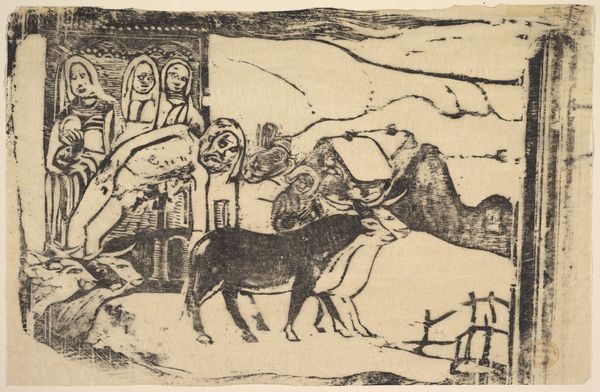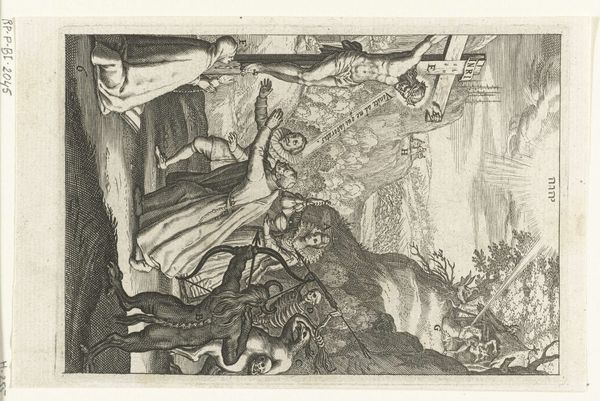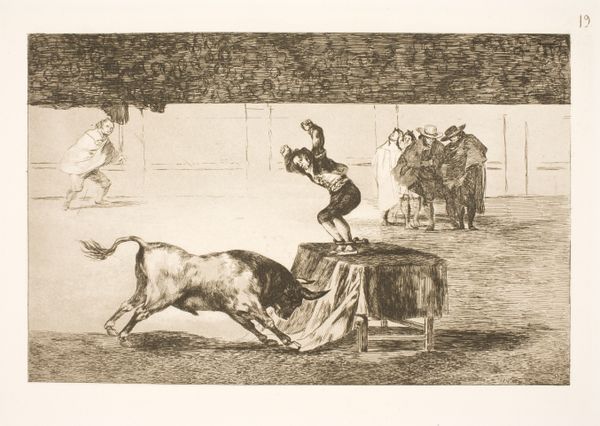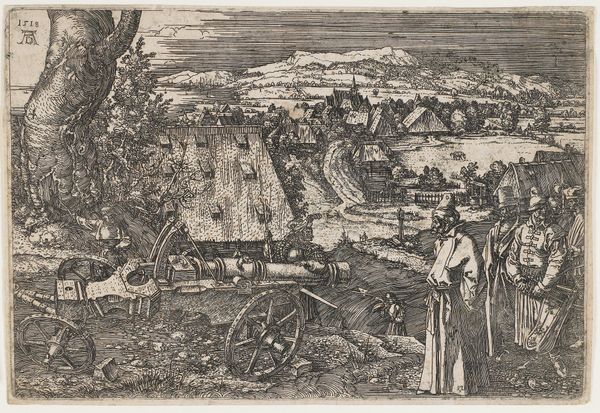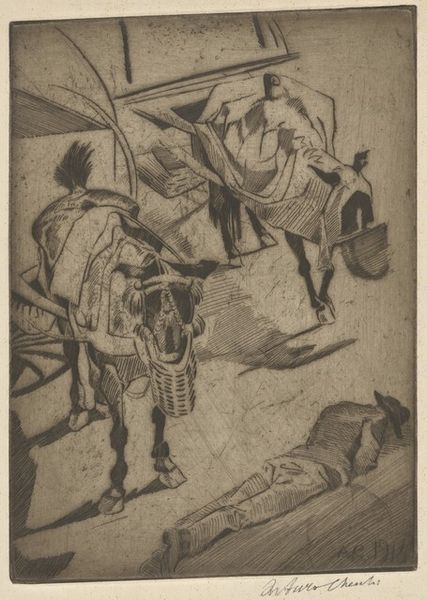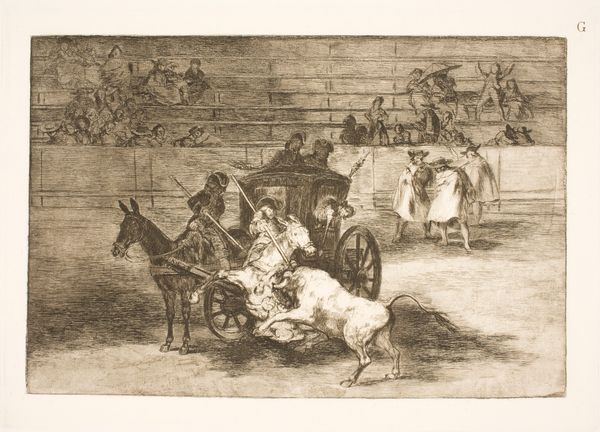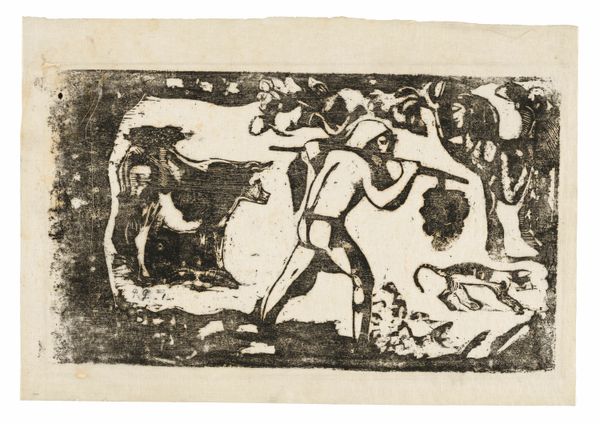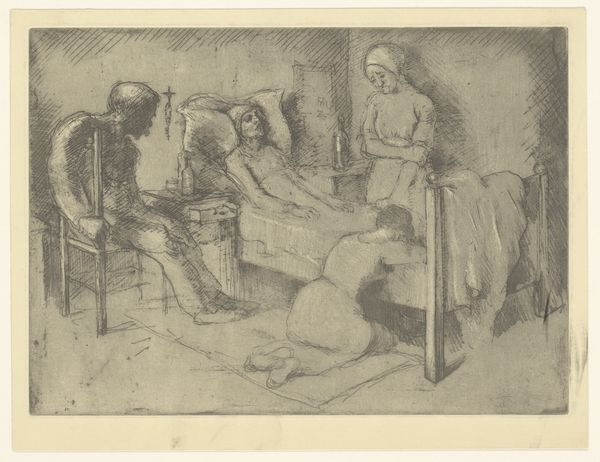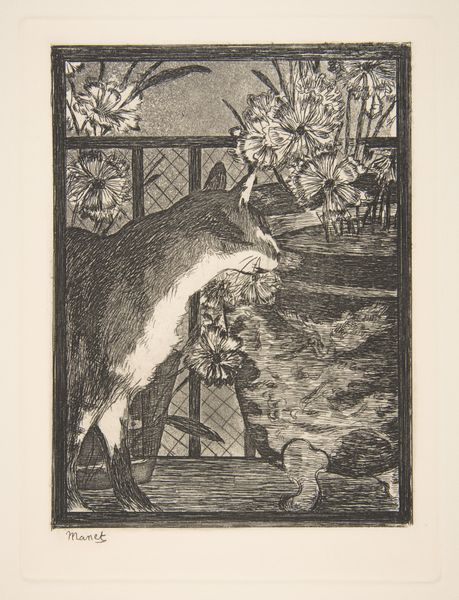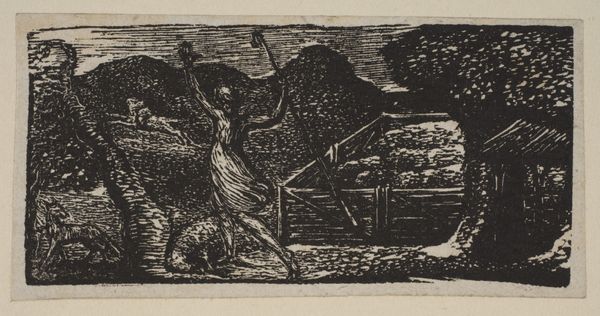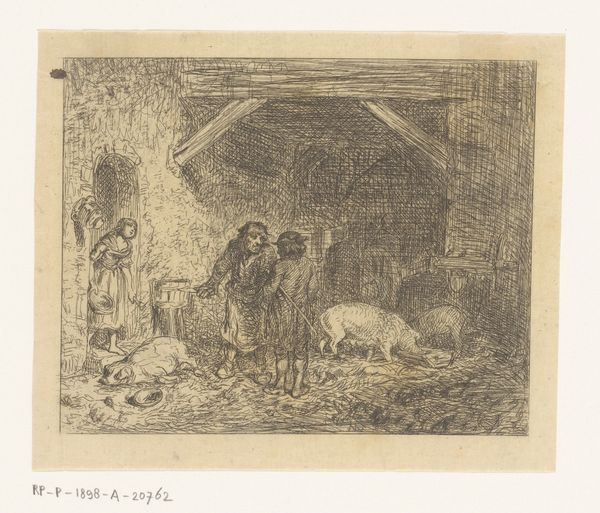
Wayside Shrine in Brittany, from the Suite of Late Wood-Block Prints 1898 - 1899
0:00
0:00
Dimensions: 152 × 227 mm (image); 152 × 227 mm (primary support); 153 × 227 mm (secondary support)
Copyright: Public Domain
Curator: This is Paul Gauguin's "Wayside Shrine in Brittany," a woodblock print from around 1898-99, currently residing here at the Art Institute of Chicago. Editor: It has such a stark, dreamlike quality. The rough texture and monochromatic palette create a very somber mood. What was Gauguin aiming for with this imagery and particular style? Curator: Gauguin was deeply interested in portraying Breton culture and spirituality. We need to situate this image in the context of late 19th-century Brittany, a place caught between tradition and modernity. The shrine becomes a site of negotiation of identities and colonial influence. Editor: I see how the printmaking process, especially the woodcut, allowed him to create that kind of crude aesthetic. Look at the marks left by the tool—it seems deliberately unrefined, resisting the slickness of commercial printmaking. Almost embracing folk craft aesthetics in a way. Curator: Precisely. He was rejecting academic art, aligning himself with what he perceived as authentic, uncorrupted cultural practices. He was exploring primitivism but as filtered through his own subjectivity and colonial lens. Think of how it reflects his complicated position as a European artist drawn to non-Western cultures. Editor: The way the figures are arranged is intriguing. You've got the religious figures in the background, and then these oxen prominently in the foreground almost obscuring them. There's a prioritization of the agricultural labor. What do you think it says about the culture? Curator: It emphasizes the interconnectedness between the sacred and the everyday, the spiritual and the material realities of the Breton people. He’s questioning how labor and devotion play into people’s identity as colonised subjects. But of course, we must remember this is still filtered through his imagination. Editor: Absolutely, and that framing is critical to interpreting the work responsibly. There’s a rawness in the execution, too, and the work asks us to really think about what kind of labor and methods he embraced to render it this way. Curator: A work steeped in cultural nuance. It encourages a re-evaluation of identity, representation, and the artist’s role in society. Editor: It is indeed an invitation to think critically about the relationship between materials, methods, culture, and how they inform the construction of meaning.
Comments
No comments
Be the first to comment and join the conversation on the ultimate creative platform.
